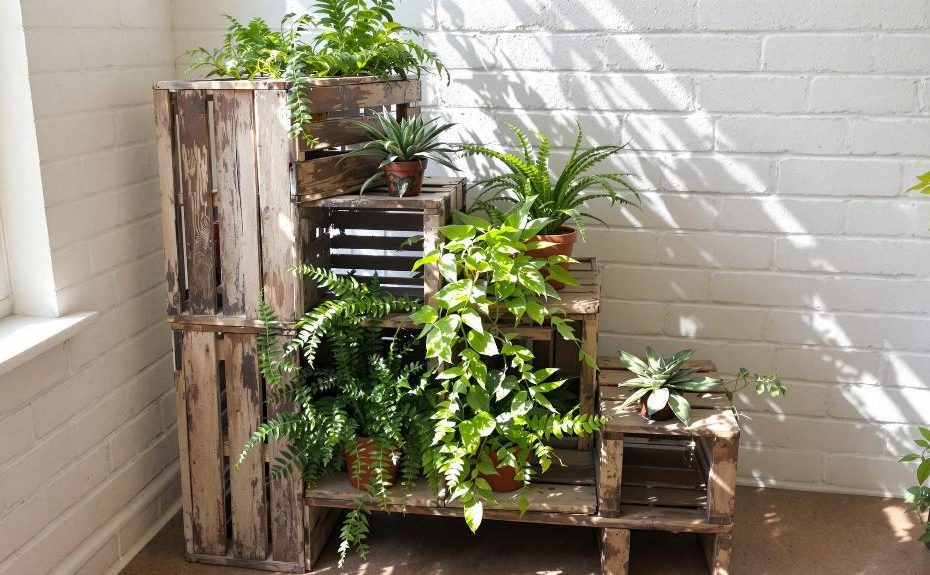DIY tiered plant stands offer creative solutions for displaying houseplants while maximizing vertical space. Popular designs include industrial pipe corner stands, rustic wooden ladder displays, and geometric metal towers that add modern flair to any room. For those seeking eco-friendly options, repurposed crates and recycled ladders create charming vintage-style shelving systems. Space-saving solutions like floating window box tiers and fold-out balcony stands work perfectly in compact areas. These stands can be customized with various materials, from copper pipes to reclaimed barn wood, and many require just basic tools and skills. There's a whole world of inspiring designs waiting to transform ordinary spaces into stunning botanical displays.
Industrial Pipe Corner Stand
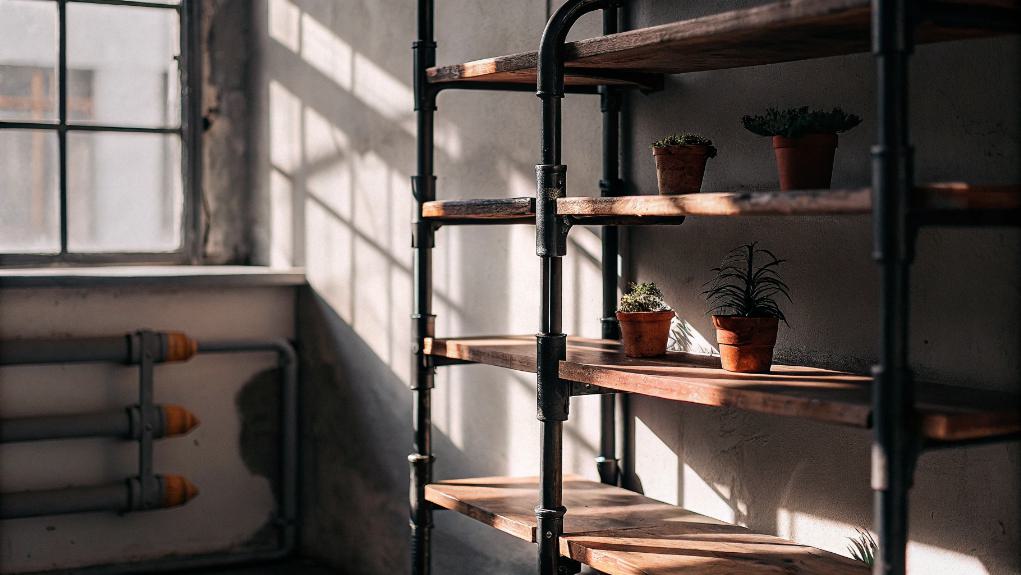
An industrial pipe corner stand offers a striking way to display plants while maximizing vertical space in tight corners. Built from sturdy black or galvanized pipes and fittings, this stand's industrial aesthetic adds modern flair to any room. The customizable design lets you adjust shelf heights and angles to fit your space. Best of all, it's surprisingly simple to assemble with basic tools and pipe components from hardware stores.
Rustic Wooden Ladder Display
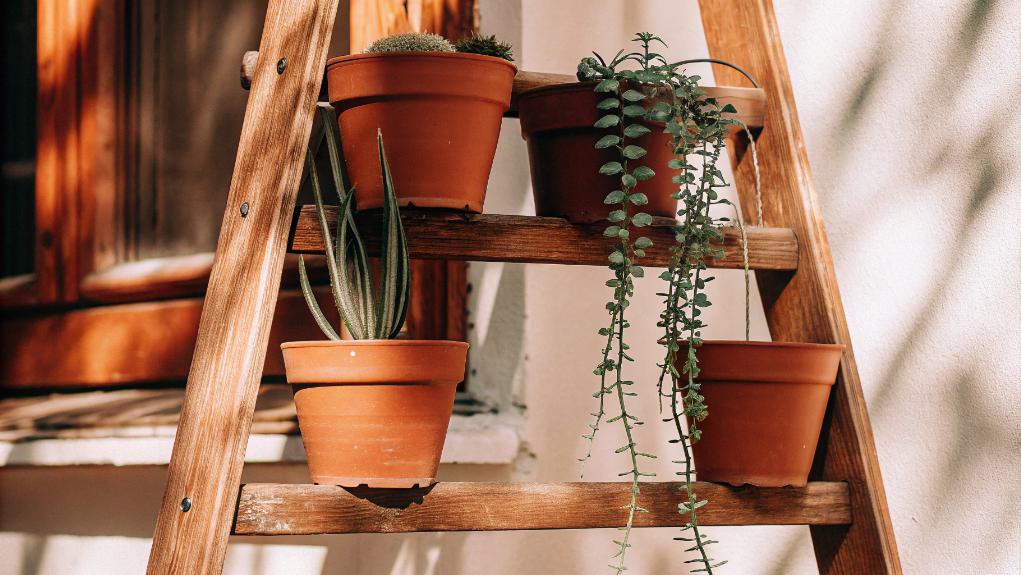
While industrial pipe stands bring modern appeal, rustic wooden ladder displays offer timeless country charm for showcasing plants. These A-frame designs can be crafted from reclaimed barn wood or new lumber that's been distressed. Add character by leaving some of the wood's natural imperfections visible. The ladder's steps provide perfect spots for pots of varying sizes, and it's freestanding nature makes seasonal rearranging a breeze.
Geometric Metal Plant Tower
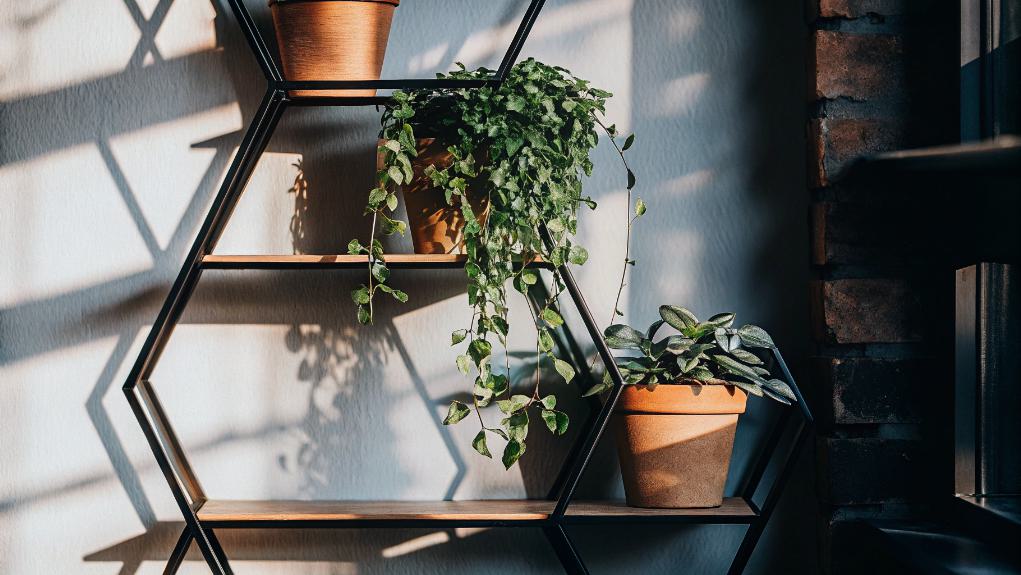
Modern homes can be transformed with sleek geometric metal plant towers that combine form and function. These eye-catching stands feature multiple levels of angular platforms, perfect for displaying succulents and small potted plants. They're typically crafted from welded steel or aluminum, with powder-coated finishes that resist rust. The tower's striking design creates visual interest while maximizing vertical growing space.
Floating Window Box Tiers
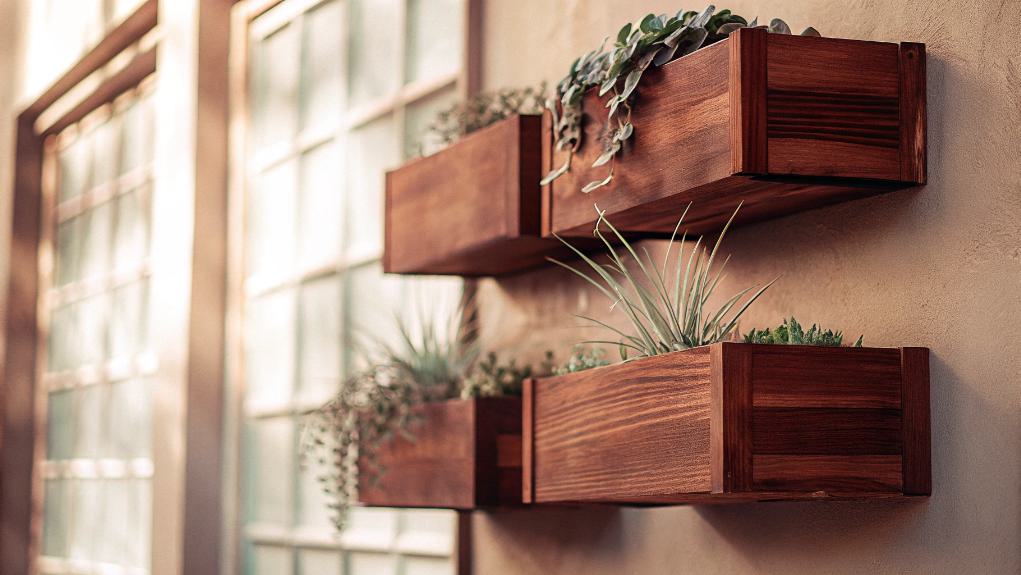
Bringing life into empty wall spaces, floating window box tiers offer a stunning vertical display for indoor and outdoor plants. They're perfect for small spaces and can be customized with different box sizes and finishes. DIY enthusiasts can create these modern planters using wooden boxes, sturdy mounting brackets, and their favorite paint colors. It's like giving your walls a garden-inspired makeover!
Repurposed Crate Shelving System
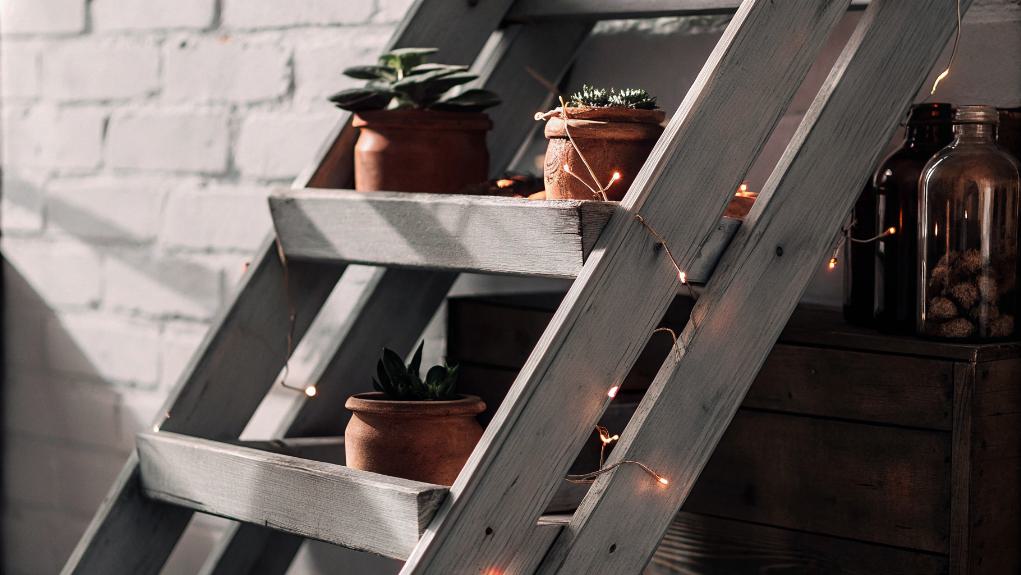
Transform old wooden crates into a charming tiered plant display that adds rustic character to any space. You'll need 3-4 sturdy crates, some sandpaper, and wood stain or paint. Stack the crates at slight angles to create visual interest, and secure them with L-brackets for stability. It's a perfect weekend project that'll give your plants a cozy, farmhouse-style home.
Minimalist Bamboo Plant Rack
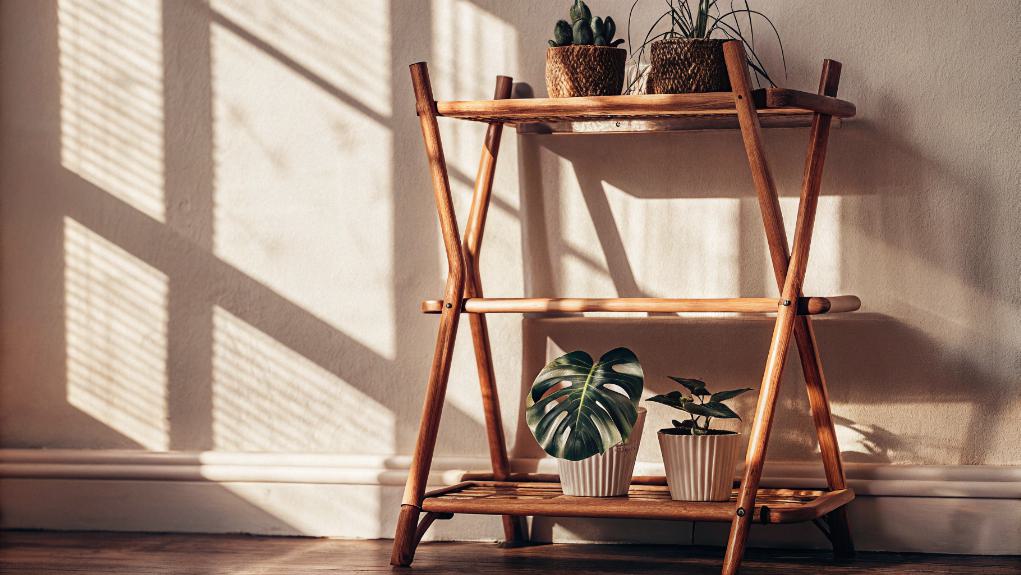
Natural bamboo poles create a sleek, eco-friendly plant stand that's both lightweight and durable. The design features three ascending tiers, perfectly spaced to catch ideal sunlight for different plant varieties. Assembly's a breeze with bamboo's natural hollow structure – just connect the poles using eco-friendly twine or steel connectors. It's perfect for displaying potted herbs, succulents, or trailing vines.
Rolling Plant Cart
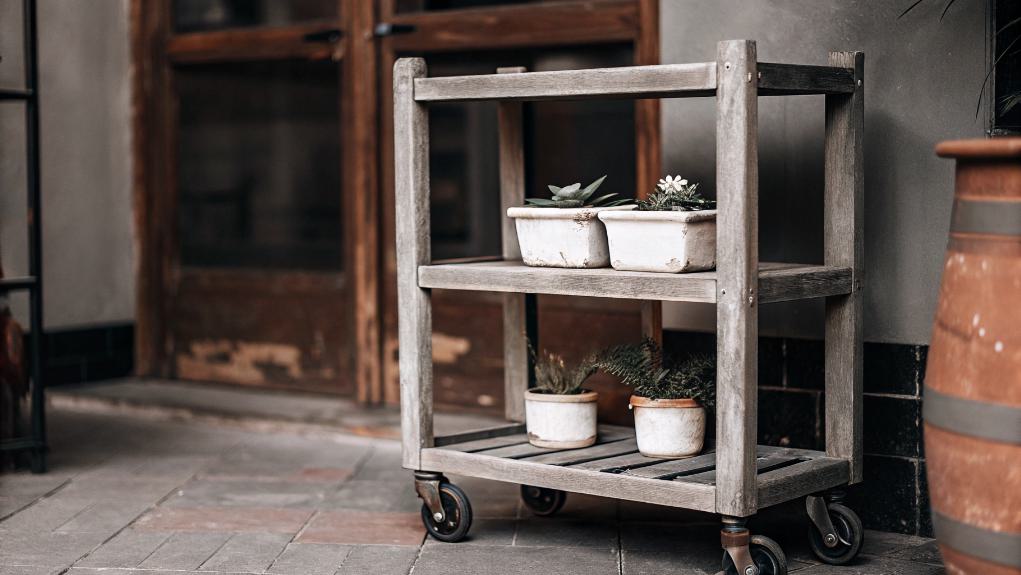
A gardener's dream comes to life with this mobile plant display solution that combines style and functionality. The rolling plant cart features sturdy caster wheels that make it easy to chase the sunlight throughout the day. It's perfect for both indoor and outdoor use, and its multiple tiers maximize vertical space while keeping plants organized and accessible for watering.
Copper Pipe Plant Stand
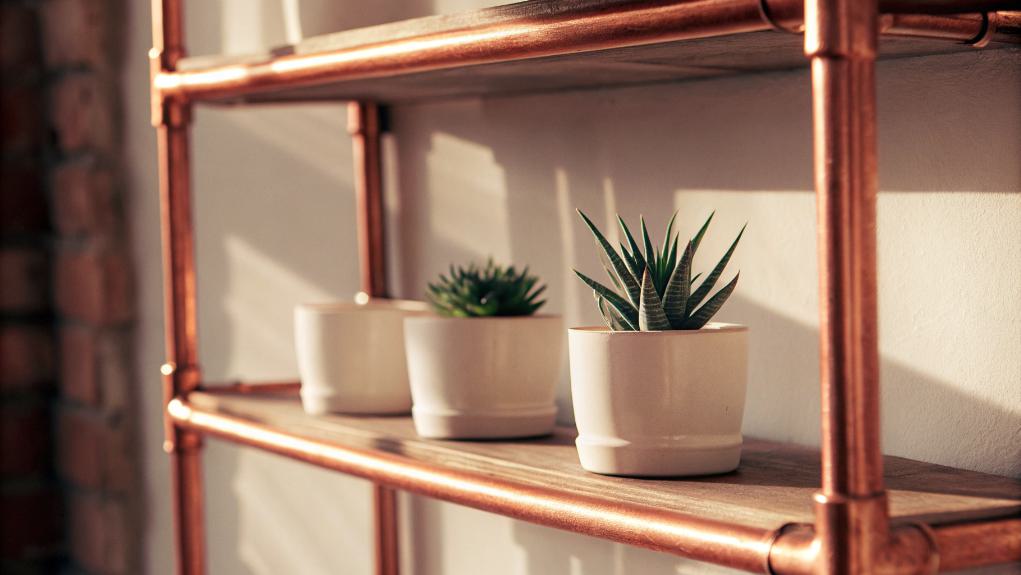
With its industrial-chic appeal, the copper pipe plant stand delivers both modern aesthetics and sturdy functionality to any living space. It's surprisingly easy to create using basic copper pipes, fittings, and a few tools from the hardware store. This eye-catching design features multiple tiers that can showcase different-sized plants, and the warm metallic finish adds a stylish touch to contemporary decor.
Macrame Hanging Plant Levels
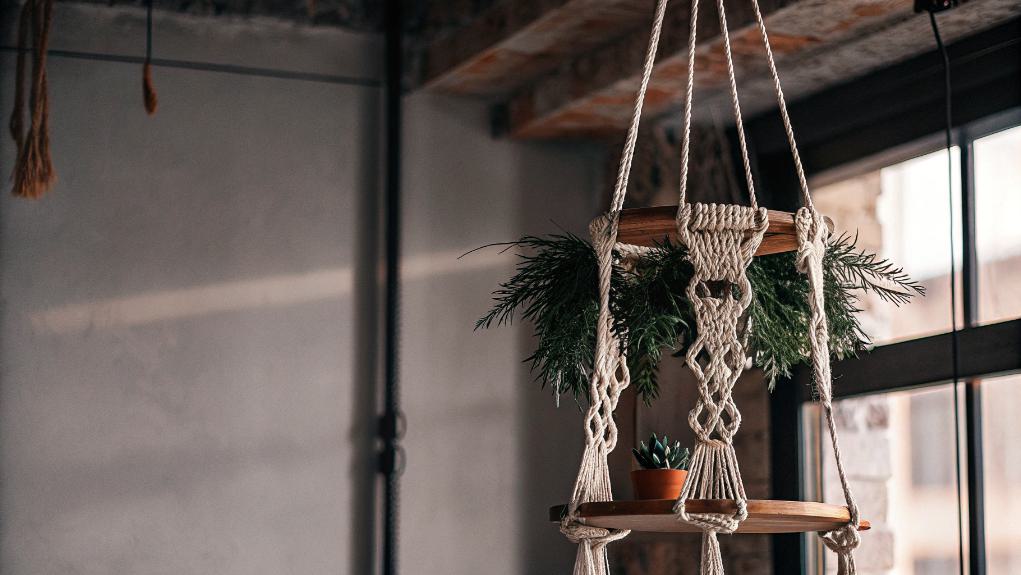
Crafters seeking a bohemian vibe will love creating tiered macrame plant holders that cascade from the ceiling. Using basic macrame knots, they'll weave natural cotton cord into a series of connected plant slings. Each level hangs slightly lower than the one above, creating a stunning vertical garden. It's like building a floating staircase for plants, and it's surprisingly easy to customize.
Concrete Block Garden Steps
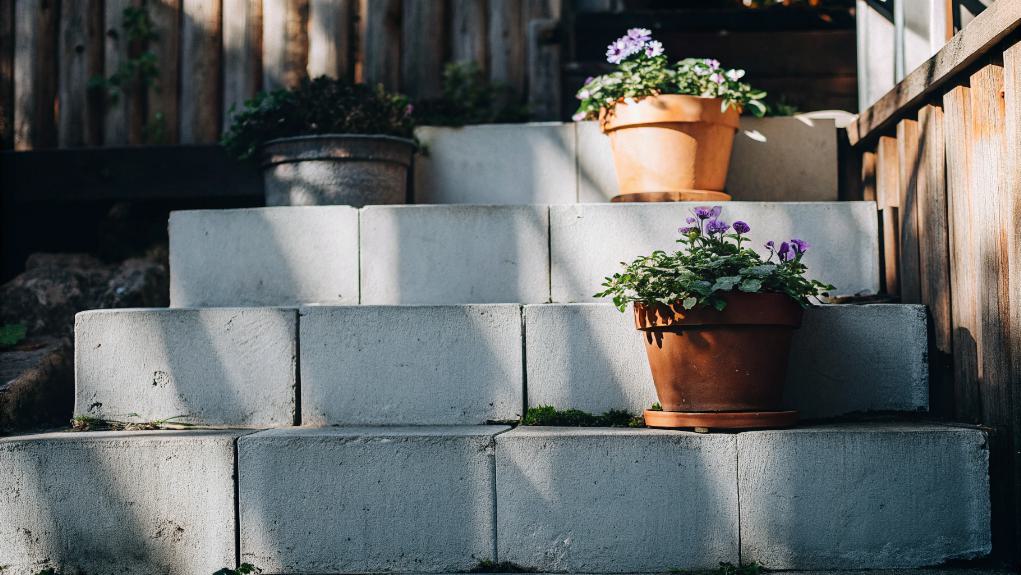
Building a garden display out of concrete blocks offers an industrial-chic solution for showcasing multiple plants. It's surprisingly simple to create stepped levels using standard concrete blocks from any hardware store. Stack them in a pyramid formation, and you've got instant planting spaces.
The blocks' hollow centers make perfect spots for pots, while the solid surfaces work great for larger containers.
Fold-Out Balcony Stand
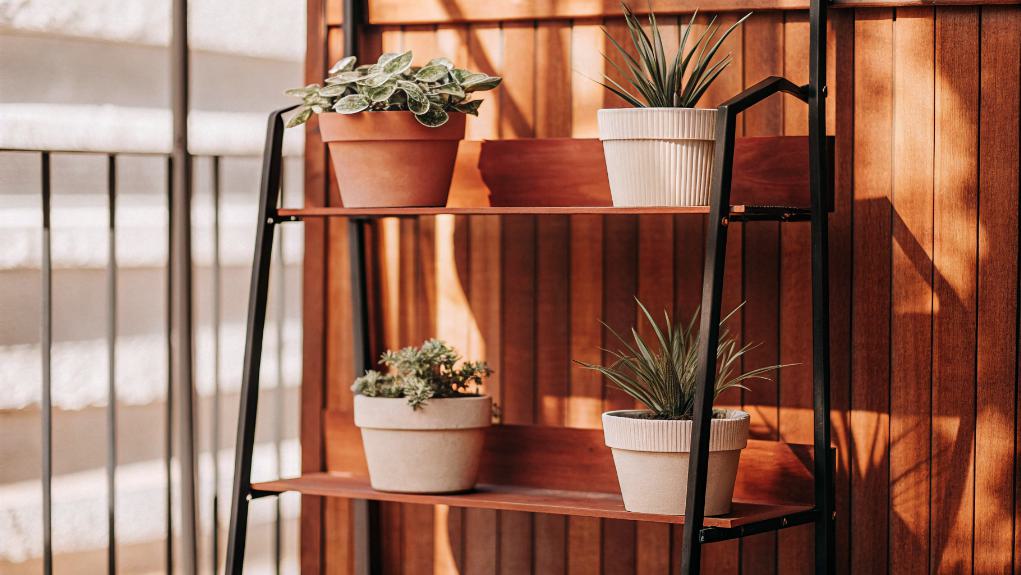
Space-saving solutions take center stage when you're working with a small balcony, and that's where fold-out plant stands truly shine. These clever units attach securely to your railing and fold down when you need them. During winter months or bad weather, they'll tuck neatly against the wall. Built with weather-resistant hinges, they're perfect for displaying herbs, succulents, or your favorite seasonal blooms.
Wrought Iron Victorian Design
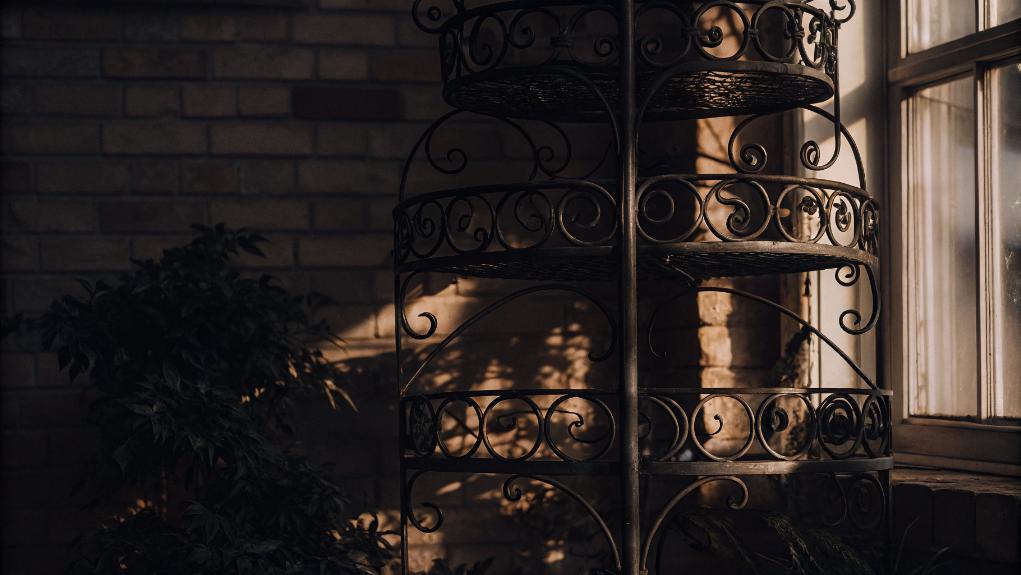
Elegance meets durability in wrought iron Victorian-style plant stands that evoke the grandeur of 19th-century conservatories. These ornate stands feature scrolling details, delicate spirals, and multiple tiers that'll showcase your favorite plants in style. DIY enthusiasts can create this look using pre-made wrought iron elements, welding them together to form a stunning display that's both weather-resistant and timelessly beautiful.
Pallet Wood Triangle Stand
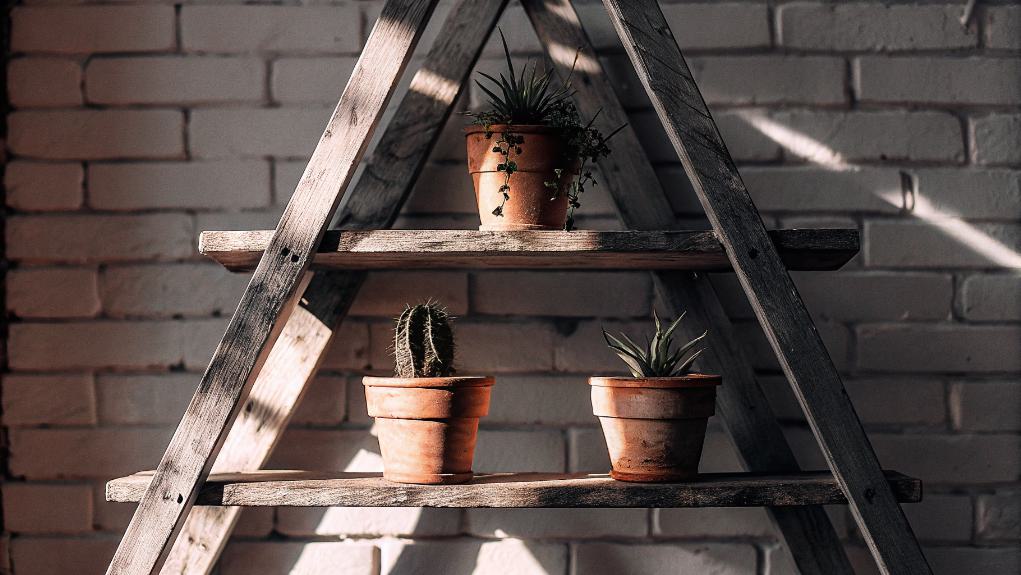
Transformed from humble shipping materials, the pallet wood triangle stand offers an eye-catching geometric design that's perfect for corner spaces. The tiered structure features three ascending platforms that create a natural cascade for displaying plants of varying sizes. It's a breeze to build with basic tools, and the weathered wood adds rustic charm that'll make your greenery pop.
Modern A-Frame Display
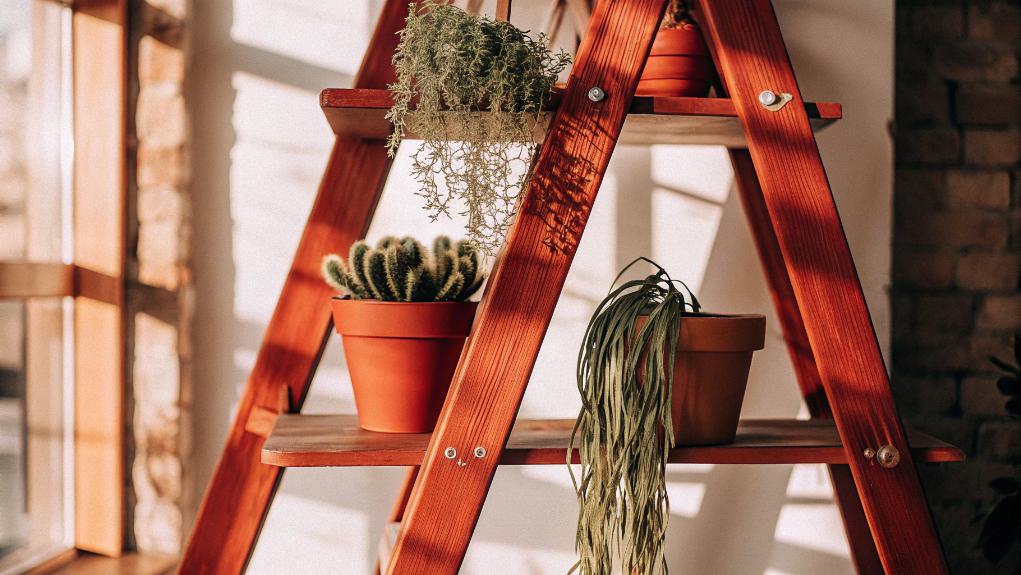
While pallet wood brings rustic appeal, the Modern A-Frame Display takes a sleek turn with its minimalist design and clean lines. It's built using smooth-finished lumber or metal pipes in a triangular shape that's perfect for contemporary homes. The stand's multiple tiers create an eye-catching geometric pattern, and its stable A-frame structure lets you showcase plants at varying heights without taking up much floor space.
Stair-Step Plant Platform
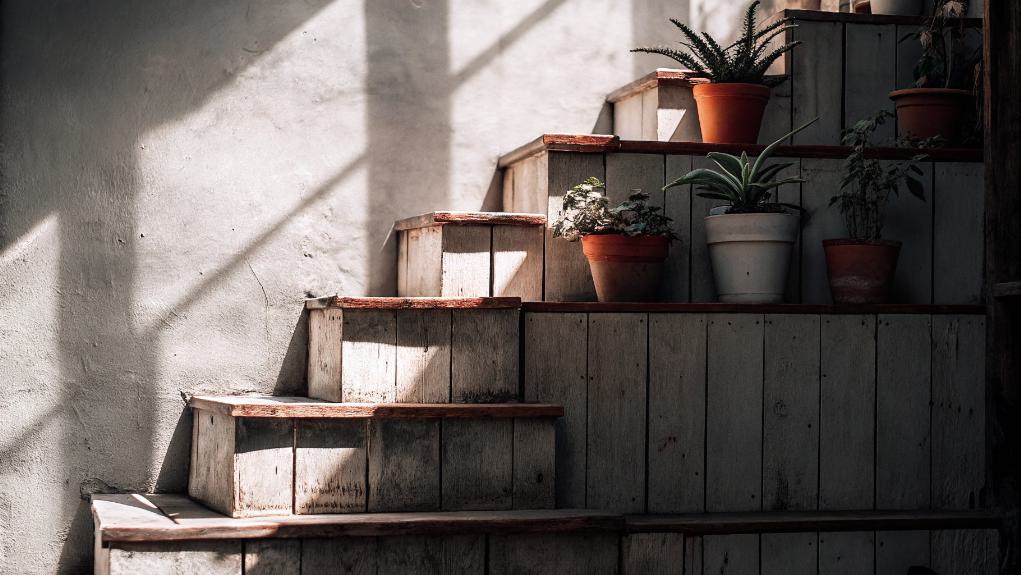
For a space-saving solution that maximizes vertical gardening, the Stair-Step Plant Platform offers a practical and visually striking design. This clever setup uses graduated levels that climb upward like stairs, creating perfect spots for plants of varying sizes. It's ideal for sunny corners or against walls, and you can build it from reclaimed wood or new lumber for that perfect rustic-meets-modern look.
Hexagonal Wire Stand
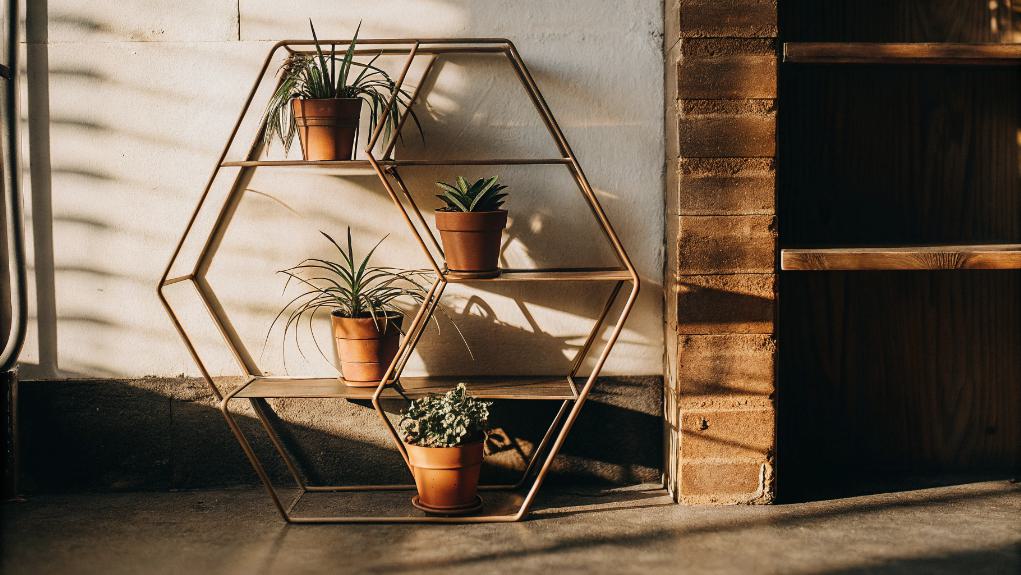
A modern take on geometric plant displays, the Hexagonal Wire Stand combines industrial charm with elegant functionality. Built from powder-coated wire mesh or galvanized steel, this multi-tiered design creates a stunning visual hierarchy for your plants. Each hexagonal shelf provides the perfect perch for various pot sizes, while the open framework lets light filter through to every level. It's a space-saving solution that's both sturdy and stylish.
Recycled Ladder Shelf
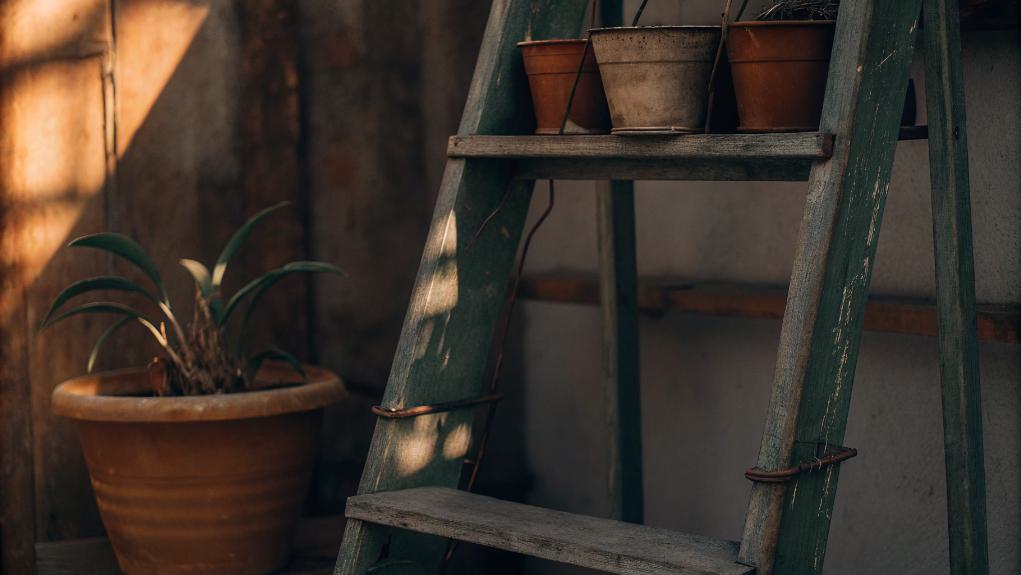
Transforming an old wooden ladder into a charming plant display creates an eco-friendly and rustic focal point for any room. Each rung serves as a natural shelf for potted plants, while the ladder's height adds visual interest to your space. You'll need to sand the ladder, give it a fresh coat of paint or stain, and secure it safely against the wall.
Nested Box Plant Tower
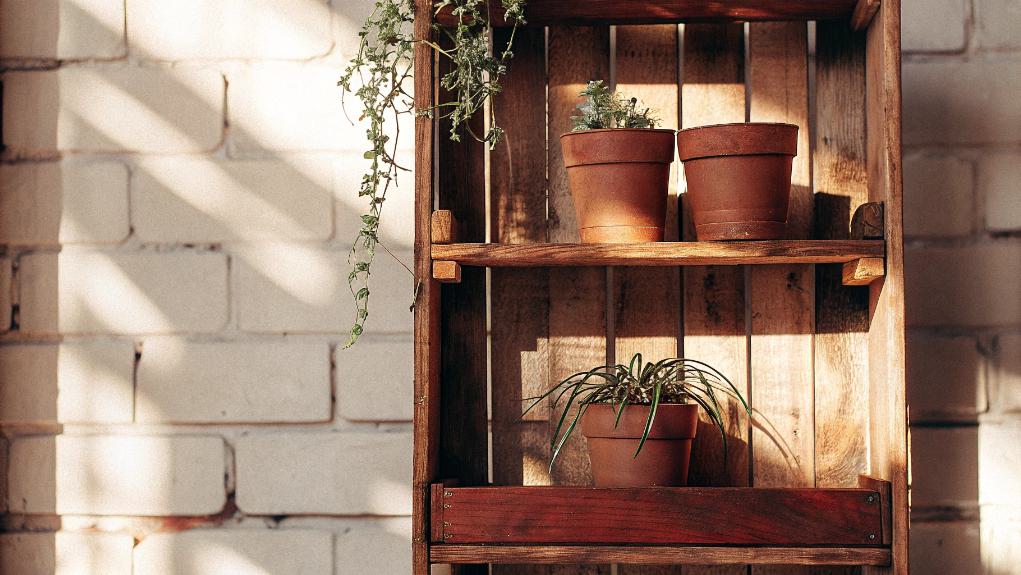
Building a nested box plant tower offers another vertical gardening solution that's both modern and space-efficient. The design uses wooden boxes of decreasing sizes stacked strategically, creating a stunning cascade effect. Each box level provides a perfect home for different plants, from trailing vines to compact succulents. It's like creating a high-rise apartment complex for your leafy friends!
Spiral Metal Display
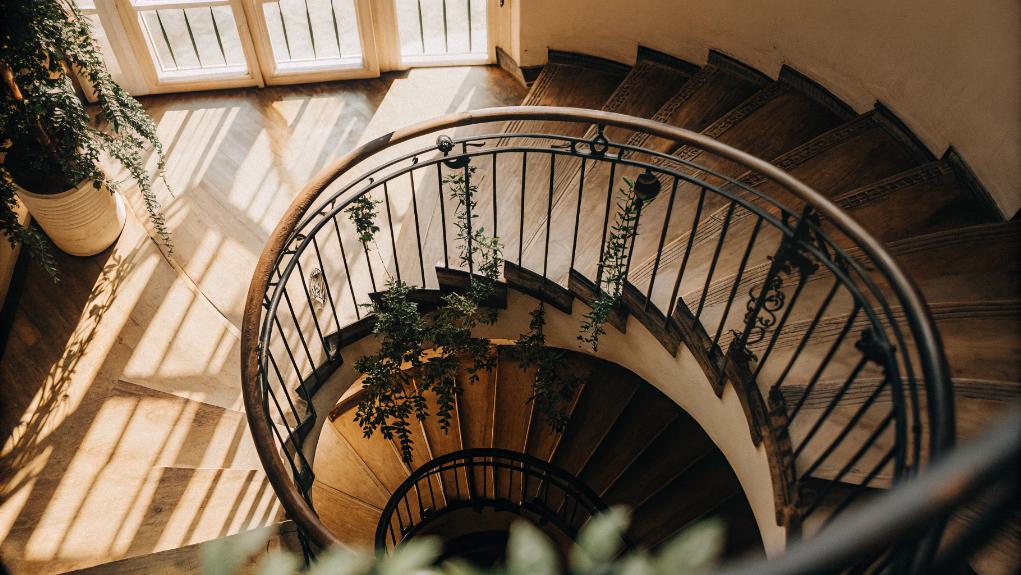
With a graceful twist of metal rods, spiral plant displays create an eye-catching vertical garden that's both functional and artistic. They're perfect for patios and balconies, maximizing vertical space while adding a modern sculptural element. You'll need sturdy metal rods, welding equipment, and basic metalworking skills to craft this stunning display that lets plants cascade down in a mesmerizing spiral pattern.
Branch-Based Natural Stand
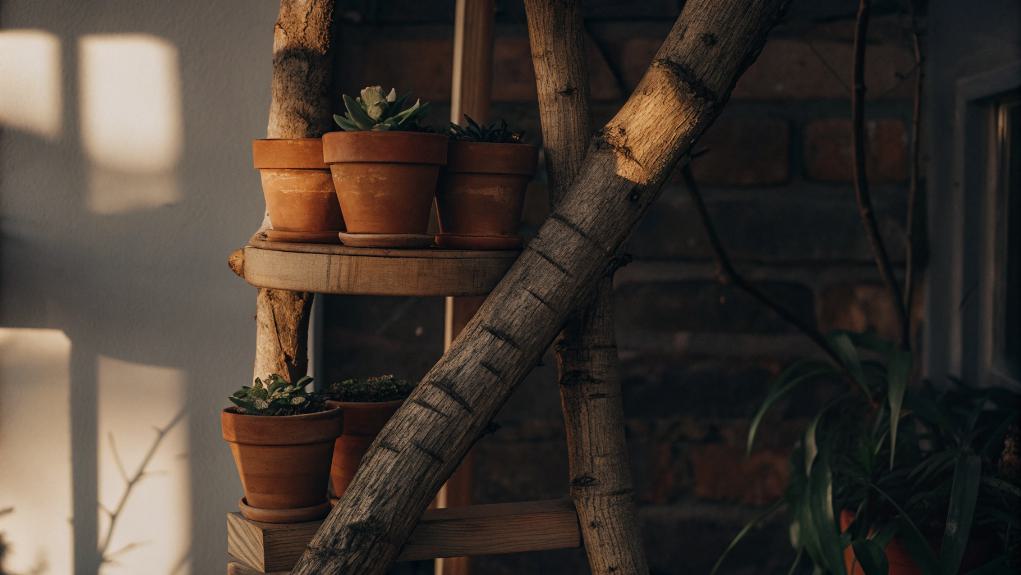
Rustic charm meets natural elegance when you create a plant stand using fallen tree branches. It's an eco-friendly project that transforms nature's castoffs into a stunning display piece. You'll need sturdy Y-shaped branches, wood sealant, and basic tools. By securing the branches at different heights and angles, you'll craft a one-of-a-kind stand that brings the outdoors inside.
Frequently Asked Questions
How Often Should I Rotate Plants on Tiered Stands for Even Sunlight Exposure?
Plants on tiered stands should be rotated every 2-3 days for even growth. Indoor plants naturally lean toward light sources, so they'll start bending if left in one position too long. It's best to give each plant a quarter turn clockwise during rotation. Plants on lower tiers need more frequent rotation since they receive less direct light than those on top.
What's the Maximum Weight Capacity for Each Tier of a Plant Stand?
The weight capacity of each tier typically ranges from 20-50 pounds for store-bought stands, while DIY wooden stands can handle 30-75 pounds per tier when properly constructed. It's essential to check the manufacturer's specifications or calculate load-bearing capacity when building your own. The bottom tier can usually support more weight than upper tiers, and it's smart to distribute heavier plants toward the base for stability.
How Do I Prevent Water Damage on Wooden Tiered Plant Stands?
To prevent water damage on wooden tiered plant stands, gardeners should apply several layers of waterproof sealant or marine-grade varnish. They'll also want to use waterproof saucers under each pot, ensuring they're slightly larger than the pots themselves. Adding rubber feet or coasters beneath the stand's base helps prevent moisture from seeping up, while regularly wiping up spills and checking for water spots keeps the wood looking fresh.
Can Tiered Plant Stands Be Safely Used Outdoors During Winter Months?
Tiered plant stands can survive outdoors during winter, but they'll need proper protection. It's best to choose weather-resistant materials like cedar, teak, or treated pine. For existing wooden stands, apply a marine-grade sealant and elevate them off the ground. During harsh weather, it's smart to move plants and stands under cover or wrap them in weatherproof material. Metal stands should be rust-proofed before winter exposure.
How Much Space Should I Leave Between Plants on Tiered Stands?
Plants on tiered stands need 6-12 inches of space between each other for ideal growth. This spacing allows for proper air circulation, prevents disease spread, and gives plants room to expand. For smaller plants like succulents, 4-6 inches might suffice, while larger leafy plants need more breathing room. One's spacing can depend on the pot size, plant type, and growth habits of each green friend.
